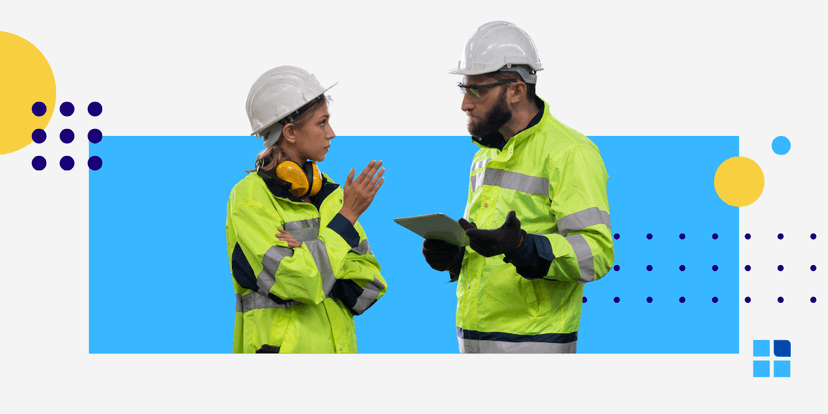Have you ever walked into an official meeting with a brilliant, well-researched idea, only to have it met with a wall of silence or picked apart by surprised colleagues? This frustrating experience happens when you present a proposed idea without any groundwork. While some business cultures value the dramatic reveal, in Japanese business culture, a successful meeting merely confirms a decision the team has already made. The real work happens beforehand, through a powerful process of consensus building known as Nemawashi.
The practice of Nemawashi is a sophisticated and respectful approach to decision making that focuses on laying the foundation for new ideas through informal communication. It’s a core concept in the Japanese work culture and a vital skill in modern project management. A deep understanding of how Nemawashi works can transform how you introduce and implement change.
This comprehensive guide will explain Nemawashi in detail. We'll explore its origins, the step-by-step Nemawashi process, and how you can apply Nemawashi in your own work to gain buy-in, strengthen your proposals, and ensure a smoother path for your projects.
What is Nemawashi? The Japanese term explained

To truly understand Nemawashi, we must first look at the Japanese word itself. The Japanese term Nemawashi (根回し) literally translates to "turning the roots" or "digging around the roots." This is an agricultural metaphor. When a gardener plans to transplant a tree, they don't just rip it out of the ground. Instead, they carefully dig around the root system, gently preparing it for the move. This careful preparation ensures the tree will survive and thrive in its new location. In short, this is the essence of Nemawashi.
In Japanese business, Nemawashi refers to this same careful preparation, but for ideas instead of trees. It is the informal, behind-the-scenes process of talking with individual key stakeholders and decision-makers to get their feedback and support before a formal proposal is made. This is the opposite of a surprise announcement in a big meeting.
This concept is deeply embedded in Japanese culture, which places a high value on group harmony and consensus. It was famously formalized as a core principle within the Toyota Production System (TPS), where respect for every employee's input is paramount. Therefore, people in Japan do not consider the Nemawashi process a sneaky or political maneuver. Instead, it's a sign of respect for the opinions of colleagues and a practical method for building consensus. A proper Nemawashi ensures a smooth decision making process.
The core philosophy why Nemawashi is essential
The practice of Nemawashi is more than just a tactic; it’s a strategic philosophy built on respect and efficiency. Understanding why this practice is essential helps to appreciate its power far beyond Japanese companies.
At its heart, this philosophy is about valuing the people you work with. Instead of surprising them with new proposals in a public forum, you engage them in one on one discussions or small group discussions. Consequently, this shows that you respect their expertise and want to gain valuable insights from their perspective. This approach naturally helps improve employee morale.
Furthermore, a successful Nemawashi makes the formal process incredibly efficient. An official meeting is not the place to start a debate; it's the place to formally endorse a decision that everyone has already had a chance to understand and influence. The final decision becomes a simple, quick confirmation because the hard work of building consensus has already been done.
Ultimately, good Nemawashi strengthens your ideas. By proactively addressing concerns from relevant stakeholders in informal settings, you can identify weaknesses in your proposal and refine it. The feedback you gather during the Nemawashi process makes your final idea more robust and far more likely to succeed. A project without this groundwork is a project at risk.
How the Nemawashi process works
While it feels informal, there is a structured method to effective Nemawashi. It’s a deliberate sequence of conversations designed to build support organically. If you want to apply Nemawashi to your next project, follow this general process:

Step 1: Identify key stakeholders
First, before you say a word, map out everyone who will be affected by or has influence over your proposed idea. This includes:
- The decision-makers: Who has the final say?
- The influencers: Who do others listen to? This could be a senior expert or a respected peer.
- The implementers: Who will have to do the work?
- The impacted: Whose daily routine will change because of this idea?
Step 2: Start with informal meetings
The Nemawashi process never starts in a formal setting. Next, begin by approaching a few trusted colleagues individually. Use these one on one discussions to casually introduce your idea as a work-in-progress. The goal here is to get an initial, honest reaction in a low-pressure environment. This is the beginning of the journey.
Step 3: Gather feedback and gain valuable insights
During these conversations, your primary job is to listen. In fact, the goal of early Nemawashi is not to convince, but to understand. Ask questions like, "What are your initial thoughts on this?" or "What potential problems do you see?" This is how you gain valuable insights and show respect. A good practitioner of this method listens more than they talk.
Step 4: Refine the proposed idea
This is a critical step that many people miss. True Nemawashi is not about pushing your original idea through unchanged. It's about co-creation. After that, take the feedback and concerns you've gathered and use them to make your proposal better. A flexible and iterative approach is essential for success.
Step 5: Gradually widen the circle
Once you've refined your idea with your initial group, start approaching more key stakeholders. For example, you might move from peers to your direct manager, then to department heads or other faculty members (in an academic setting). Each conversation builds momentum and further strengthens the proposal. This gradual expansion is the "turning the roots" aspect of Nemawashi.
Step 6: Achieve informal consensus
Finally, the ultimate goal of the Nemawashi process is to arrive at the official meeting with a proposal that holds no surprises. By this point, all relevant stakeholders have seen the idea, provided their input, and had their concerns addressed. The final decision in the meeting becomes a formality, a simple act of confirming the consensus you've already built through your diligent Nemawashi. This is how Nemawashi leads to success.
Practical techniques for effective Nemawashi
Mastering the art of Nemawashi involves developing a few key interpersonal skills. It's an art that improves with practice.
Here are some techniques to make your efforts more effective:
- Do your homework: Before approaching a stakeholder, understand their priorities, challenges, and communication style. Tailor your approach to them. This makes your efforts more impactful.
- Present ideas as drafts: Never present your proposal as a finished product. Use phrases like, "I'm working on a rough idea and would love your thoughts." This invites collaboration rather than a simple yes/no judgment.
- Acknowledge all feedback: Whether you agree with it or not, always thank people for their input. Showing that you've listened builds goodwill, which is essential for the Nemawashi process.
- Be patient and persistent: Nemawashi is not a fast process. It requires patience as you navigate different personalities and schedules. Don't be discouraged if you have to have multiple conversations.
- Build strong relationships: The most effective consensus building happens within a context of existing trust. Consistently being a reliable and respectful colleague makes the Nemawashi process much smoother when you need to propose new ideas.
Nemawashi in the modern workplace
A common question is how Nemawashi can work in a global, remote, or hybrid environment. The principles remain the same, but the tools change. Indeed, you can effectively use digital communication tools for your Nemawashi efforts.
While a face-to-face conversation is often best, you can apply Nemawashi using modern technology:
- Instant messaging for informal chats: For instance, a quick message on Slack or Microsoft Teams can be a great way to start a low-stakes one on one discussion to float an initial idea.
- Short video calls: A brief 15-minute video call is more personal than an email and allows you to read non-verbal cues, which is crucial for this process.
- Collaborative documents: Using tools like Google Docs or Miro, you can invite a small group to comment on a draft proposal, creating a digital space for small group discussions and feedback.
- Carefully crafted emails: A well-written email that clearly asks for specific feedback can also be a part of the Nemawashi process, especially when dealing with different time zones.
However, be mindful of the limitations. It's harder to build rapport and interpret tone through text alone. Whenever possible, a real-time conversation is the superior choice for sensitive or complex Nemawashi. You can even use tools like employee surveys to gauge the general sentiment around a topic before you begin your targeted outreach.
The powerful benefits of a Nemawashi approach
When organizations encourage and reward the practice of Nemawashi, they unlock significant benefits that go far beyond just smoother meetings.
Here are some of the advantages of building consensus through Nemawashi:
- A faster overall decision making process: While the informal phase of Nemawashi takes time, it drastically speeds up the formal approval and implementation phases. The final decision is quick because there are no surprises or roadblocks.
- Stronger and more resilient ideas: New proposals that have been through a rigorous Nemawashi process are stronger. They have been vetted, challenged, and improved by a diverse group of key stakeholders.
- Increased buy-in and smoother implementation: People are far more likely to support a change that they had a hand in shaping. Nemawashi creates a sense of shared ownership.
- Improved employee morale: The practice of Nemawashi shows employees that their opinions are valued. This inclusive approach to decision making is a powerful morale booster.
- Enhanced project management: For a project manager, using Nemawashi at the start of a project to align stakeholders is one of the most effective ways to prevent roadblocks and ensure long-term success. The time invested in this practice pays dividends throughout the project lifecycle.
Common challenges and how to overcome them
Despite its benefits, implementing Nemawashi can present some challenges, especially in non-Japanese business cultures.
- It can feel slow: To be sure, the biggest critique of this method is that it takes a long time.
- How to handle it: Reframe your thinking. Nemawashi speeds up the total time from idea to successful implementation by eliminating the delays caused by resistance and rework.
- It can be mistaken for office politics: Some people might mistake its behind-the-scenes nature for a manipulative tactic.
- How to handle it: Be transparent about your intentions. State clearly that you are gathering feedback to build the best possible proposal. True Nemawashi is inclusive, not exclusive.
- It requires a different skillset: In some cultures, a confrontational, debate-style meeting is highly valued, which is the opposite of Nemawashi.
- How to handle it: Practice active listening and collaborative problem-solving. Frame your Nemawashi efforts as "pre-wiring" or "building a coalition" to make the concept more familiar.
Making consensus a part of your culture
In conclusion, Nemawashi is far more than an interesting quirk of Japanese business culture. It is a sophisticated and deeply respectful strategy for managing change, fostering collaboration, and making better decisions. The Nemawashi process transforms the introduction of new ideas from a high-stakes gamble into a collaborative journey.
By taking the time to engage with relevant stakeholders through one on one discussions and small group discussions, you are not just selling an idea; you are building the foundation for its success. This timeless approach of Nemawashi is invaluable for anyone in project management or leadership. The next time you have a promising idea, resist the urge to build a grand presentation. Instead, start the quiet, crucial work of Nemawashi. This is how Nemawashi builds a stronger, more aligned organization.







